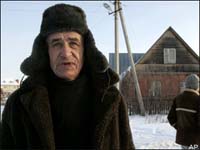Russia's veterinary service predicts more H5N1 bird flu cases in fowl around Moscow
Russian authorities expect new outbreaks of the H5N1 strain of bird flu in the Moscow region and the surrounding provinces, the veterinary service said Wednesday in a statement sent to other governments.

The virus, which began killing domestic birds in the Moscow suburbs on Feb 9, has been traced to a single animal market just outside Moscow.
Given the large numbers of birds that had been sold at the market, the authorities "expect new outbreaks in the Moscow region" and the surrounding provinces in western Russia, according to the statement sent by the federal veterinary service to the European Union, the United States and other nations.
The veterinary service said the outbreak was contained at one private farm at each location affected. "Quick measures have allowed to contain the virus spread," it said. The service said poultry at locations affected by the outbreak had been culled and several areas had been put under quarantine.
Russia's Emergency Situations Ministry said that at least 333 domestic birds have died since Feb. 9 and an additional 1,833 have been culled at eight locations on Moscow's outskirts.
Laboratory tests had identified the virus as similar to the one found in China's Qinghaihu province, the veterinary service said.
Poultry that died belonged to individuals who had bought birds recently. Many people in the Moscow suburbs keep small numbers of chickens in their yards.
The veterinary service said it would vaccinate birds in towns and villages where the virus has been spotted, reports AP.
Officials said several people who had been in close contact with the dead birds were under medical observation, but no one has been infected.
No human cases of bird flu have been reported in Russia, which had its first reported cases of the H5N1 strain in Siberia in 2005. Outbreaks have since occurred farther west, but mostly in southern areas far from the capital.
Since it began ravaging Asian poultry farms in late 2003, the H5N1 strain has killed at least 167 people worldwide, according to the World Health Organization.
Although it remains difficult for humans to catch, health authorities across the world are monitoring the strain out of concern it could mutate into a form that easily spreads from person to person and spark a pandemic.
Subscribe to Pravda.Ru Telegram channel, Facebook, RSS!

